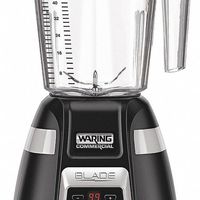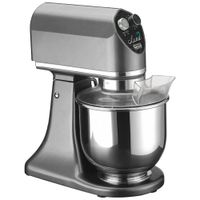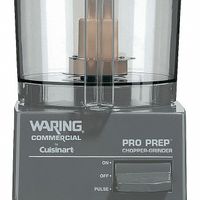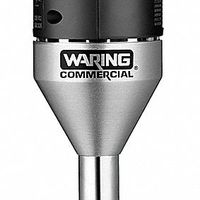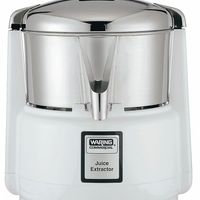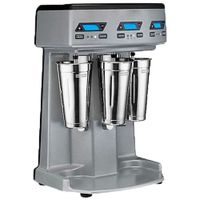Call +(254) 703 030 000 / 751 483 999 / 721 704 777
- Home
- Furnishings Appliances Hospitality
- Appliances
- Food Processors Mixers Blenders
Frequently Asked Questions
What is the difference between a food processor and a blender?
A food processor and a blender are both kitchen appliances designed to assist with food preparation, but they serve different purposes and have distinct functionalities.
A food processor is a versatile appliance equipped with a wide, flat bowl and interchangeable blades and discs. It is designed for tasks that require more precision and control, such as chopping, slicing, grating, shredding, and kneading dough. Food processors are ideal for handling solid and semi-solid foods, making them perfect for preparing ingredients for recipes, such as chopping vegetables, making pastry dough, or grating cheese. They typically have a powerful motor and various speed settings to accommodate different tasks.
On the other hand, a blender is primarily used for liquid-based tasks. It features a tall, narrow container with fixed blades at the bottom. Blenders are designed to create smooth textures by pureeing, liquefying, and emulsifying ingredients. They are ideal for making smoothies, soups, sauces, and other liquid-based recipes. Blenders are particularly effective at breaking down soft fruits and vegetables, ice, and other liquids to create a homogeneous mixture. They usually have multiple speed settings and sometimes come with additional features like pulse functions.
In summary, the main difference lies in their intended use: food processors are best for solid and semi-solid foods requiring chopping or slicing, while blenders excel at creating smooth, liquid-based mixtures. The choice between the two depends on the specific tasks you need to perform in the kitchen.
How do I choose the right food processor for my needs?
1. **Purpose and Usage**: Determine what tasks you need the food processor for, such as chopping, slicing, shredding, pureeing, or kneading dough. This will help you decide on the necessary features and attachments.
2. **Capacity**: Choose a size based on your household needs. Small (2-4 cups) for basic tasks, medium (8-10 cups) for regular use, and large (12-16 cups) for bigger families or batch cooking.
3. **Power**: Opt for a motor with at least 600 watts for basic tasks. For heavy-duty tasks like kneading dough, consider a more powerful motor (750 watts or more).
4. **Attachments and Accessories**: Look for models with versatile attachments like slicing discs, shredding discs, dough blades, and chopping blades. Some models offer additional accessories for specific tasks.
5. **Ease of Use and Cleaning**: Choose a model with intuitive controls and dishwasher-safe parts for easy cleaning. Consider the ease of assembly and disassembly.
6. **Size and Storage**: Ensure the processor fits your kitchen space. Compact models are ideal for small kitchens, while larger models may require more storage space.
7. **Build Quality and Durability**: Look for a sturdy build with high-quality materials. Stainless steel blades and a solid base ensure longevity and stability during use.
8. **Brand and Warranty**: Consider reputable brands known for quality and reliability. Check the warranty period for added assurance.
9. **Budget**: Set a budget that aligns with your needs. Basic models are more affordable, while high-end models with more features and power are pricier.
10. **Reviews and Recommendations**: Read user reviews and expert recommendations to gauge performance and reliability.
Can I use a blender as a food processor?
Yes, you can use a blender as a food processor for certain tasks, but there are limitations. Blenders are designed for liquids and are ideal for making smoothies, soups, and purees. They work well for tasks that require a lot of liquid or a smooth consistency. However, they may not be as effective for tasks that require precision or a specific texture, such as chopping vegetables, making dough, or shredding cheese.
When using a blender as a food processor, you may need to work in smaller batches to ensure even processing. You might also need to add some liquid to help the blades move more freely, which can alter the texture of the final product. Additionally, blenders typically have a narrower base, which can make it difficult to process larger or bulkier items evenly.
For tasks like chopping or slicing, you may need to pulse the blender to avoid over-processing. This requires careful attention to avoid turning ingredients into a puree. Some blenders come with additional attachments or settings that can mimic food processor functions, but they may not be as efficient or versatile as a dedicated food processor.
In summary, while a blender can substitute for a food processor in some cases, it may not deliver the same results for all tasks. Consider the specific requirements of your recipe and the capabilities of your blender before deciding to use it as a food processor.
What are the best brands for food processors and blenders?
Some of the best brands for food processors and blenders include:
1. **Cuisinart**: Known for its high-quality food processors, Cuisinart offers a range of models that are durable, efficient, and versatile. They are often praised for their powerful motors and user-friendly designs.
2. **KitchenAid**: Famous for its stand mixers, KitchenAid also produces reliable food processors and blenders. Their products are known for their durability, stylish design, and a wide array of attachments and accessories.
3. **Breville**: This brand is recognized for its innovative and high-performance kitchen appliances. Breville blenders and food processors are often highlighted for their sleek design, powerful performance, and advanced features.
4. **Ninja**: Known for offering powerful blenders at a more affordable price point, Ninja products are popular for their strong motors and versatility, making them suitable for a variety of blending tasks.
5. **Vitamix**: A premium brand in the blender market, Vitamix is renowned for its high-performance blenders that are capable of handling tough ingredients with ease. They are often used in professional kitchens and are known for their durability and efficiency.
6. **Hamilton Beach**: This brand offers budget-friendly options for both blenders and food processors. Hamilton Beach products are known for their reliability and good performance at an affordable price.
7. **Magimix**: Originating from France, Magimix food processors are known for their robust build and efficiency. They are often praised for their longevity and the quality of their components.
8. **Oster**: Offering a range of affordable blenders, Oster is known for its durable and versatile products that provide good value for money.
These brands are recognized for their quality, performance, and customer satisfaction in the realm of food processors and blenders.
How do I clean and maintain my food processor or blender?
1. **Unplug and Disassemble**: Always unplug the appliance before cleaning. Disassemble all removable parts, including the blade, lid, and bowl or jar.
2. **Rinse Immediately**: Rinse the removable parts under warm water immediately after use to prevent food from drying and sticking.
3. **Soak in Soapy Water**: Fill a basin with warm, soapy water and soak the parts for a few minutes. This helps loosen any stubborn residue.
4. **Scrub Gently**: Use a soft sponge or brush to scrub the parts, paying special attention to the blades and crevices. Avoid abrasive materials that can scratch surfaces.
5. **Clean the Base**: Wipe the motor base with a damp cloth. Never immerse it in water. Use a toothbrush or cotton swab to clean around buttons and knobs.
6. **Rinse and Dry**: Rinse all parts thoroughly with clean water to remove soap residue. Dry them with a clean towel or let them air dry completely.
7. **Reassemble and Store**: Once dry, reassemble the food processor or blender. Store it in a clean, dry place.
8. **Deep Clean Periodically**: For a deeper clean, fill the blender jar with warm water and a few drops of dish soap. Run the blender for a few seconds, then rinse thoroughly.
9. **Remove Odors**: To eliminate odors, blend a mixture of baking soda and water, then rinse.
10. **Sharpen Blades**: Occasionally, sharpen the blades using a sharpening stone or have them professionally sharpened.
11. **Check for Wear and Tear**: Regularly inspect for any signs of wear, such as cracks or dull blades, and replace parts as needed.
12. **Follow Manufacturer’s Instructions**: Always refer to the user manual for specific cleaning and maintenance guidelines.
What are the essential attachments for a food mixer?
A food mixer is a versatile kitchen appliance that can perform a variety of tasks with the help of different attachments. Here are the essential attachments for a food mixer:
1. **Flat Beater**: This is the most commonly used attachment for general mixing tasks. It is ideal for mixing cake batters, cookie doughs, and other medium-consistency mixtures. The flat beater ensures even mixing and is perfect for creaming butter and sugar.
2. **Wire Whisk**: The wire whisk attachment is designed for incorporating air into mixtures. It is essential for whipping cream, beating egg whites, and making meringues. The balloon shape of the whisk allows for maximum aeration, resulting in light and fluffy textures.
3. **Dough Hook**: This attachment is specifically designed for kneading dough. It mimics the action of hand-kneading, making it perfect for bread, pizza, and pasta doughs. The dough hook saves time and effort, ensuring a smooth and elastic dough.
4. **Paddle Attachment**: Similar to the flat beater, the paddle attachment is used for heavier mixtures. It is ideal for mixing ingredients that require more power, such as mashed potatoes or thick cookie doughs.
5. **Pouring Shield**: While not a mixing tool, the pouring shield is an essential accessory that prevents ingredients from splattering out of the bowl. It also makes it easier to add ingredients while the mixer is running.
6. **Flex Edge Beater**: This attachment has a flexible edge that scrapes the sides of the bowl while mixing. It ensures that all ingredients are incorporated without the need to stop and scrape the bowl manually.
These attachments enhance the functionality of a food mixer, making it a valuable tool for a wide range of culinary tasks.
How do I troubleshoot common issues with my blender or food processor?
To troubleshoot common issues with your blender or food processor, follow these steps:
1. **Power Issues**: Ensure the appliance is plugged in securely. Check the outlet by plugging in another device. Inspect the power cord for damage. If the appliance has a reset button, press it.
2. **Motor Not Running**: Confirm the lid and bowl are properly aligned and locked. Many models have safety interlocks that prevent operation if not correctly assembled. Check for overheating; let the motor cool down if necessary.
3. **Unusual Noises**: Turn off the appliance immediately. Check for obstructions in the blades or motor. Ensure the blades are not bent or damaged. Tighten any loose parts.
4. **Blades Not Spinning**: Ensure the bowl is not overfilled. Check for food jams around the blades. Inspect the drive shaft and blade assembly for wear or damage. Replace if necessary.
5. **Leaking**: Ensure the lid and bowl are properly sealed. Check for cracks in the bowl or lid. Inspect the gasket or seal for wear and replace if needed.
6. **Poor Performance**: Sharpen or replace dull blades. Ensure ingredients are cut into smaller pieces before processing. Check the speed settings and adjust as needed.
7. **Burning Smell**: Turn off the appliance immediately. Check for overheating or overloading. Allow the motor to cool and reduce the load next time.
8. **Buttons Not Responding**: Clean the control panel to remove any food debris. Check for moisture or damage to the buttons.
9. **Maintenance**: Regularly clean all parts after use. Avoid immersing the motor base in water. Lubricate moving parts if recommended by the manufacturer.
If issues persist, consult the user manual or contact customer support for further assistance.
